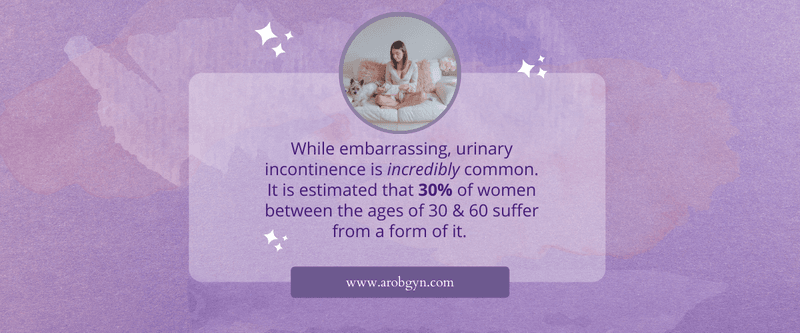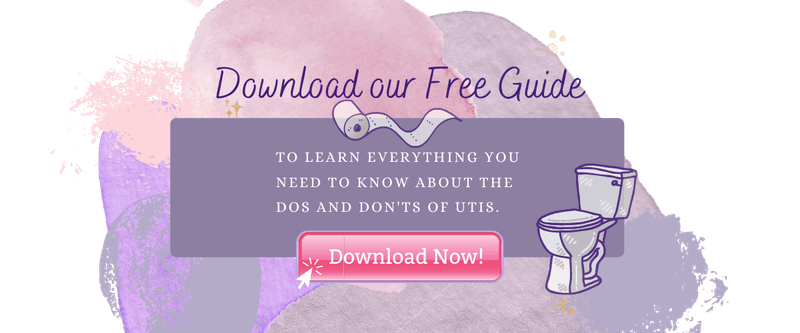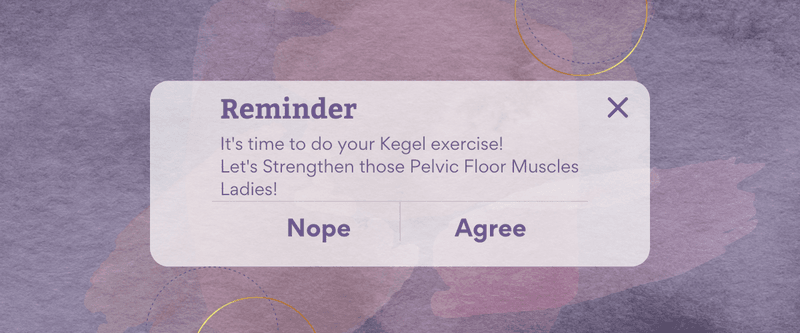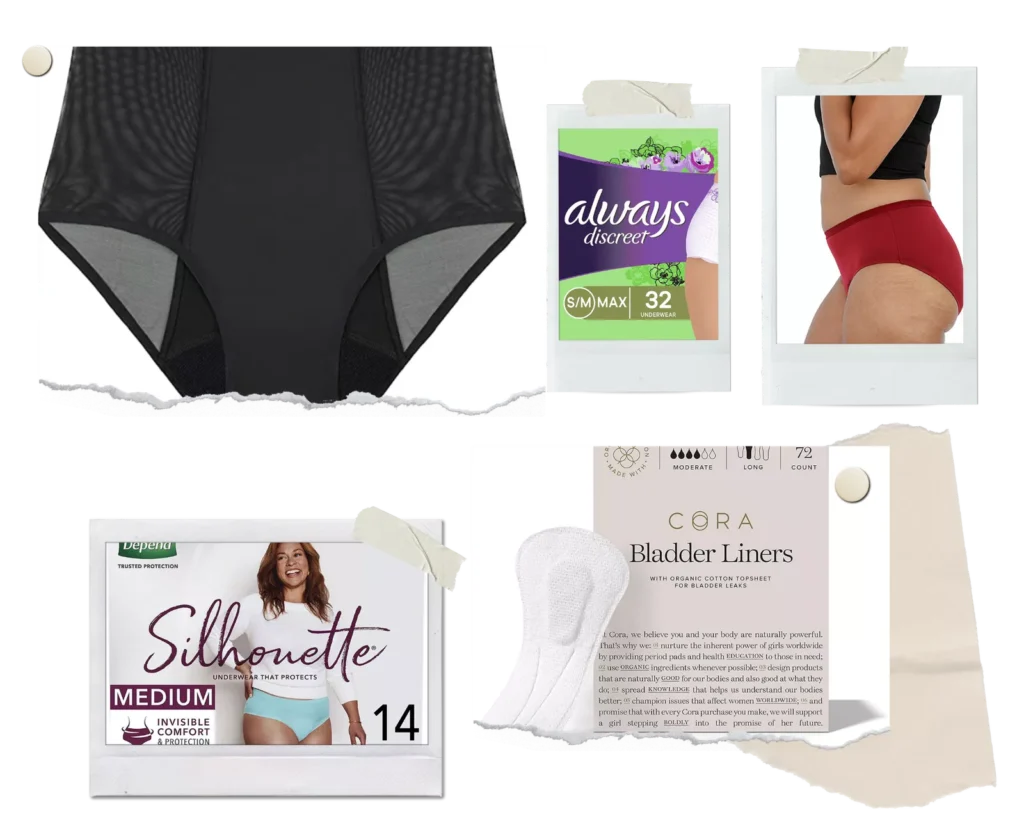Continence is the ability to control your bladder and your flow of urine. Urinary incontinence means that you are not always able to obtain complete control over your urine flow. This is a very common problem for women, especially those who have given birth. A number of factors can cause urinary incontinence, but, generally speaking, they all have to do with the health of your bladder and the strength of your pelvic floor muscles.

The Types of Urinary Incontinence
Functional Incontinence
With functional incontinence, urine leaks from the urethra because it’s difficult to reach the bathroom in time. This can be caused by mobility issues, arthritis, or other physical or cognitive disabilities.
Overflow Incontinence
Overflow incontinence is caused by your body producing more urine than your bladder can hold. This can be caused by a natural overproduction of urine or by holding your urine in for too long.
Stress Incontinence
Stress incontinence is caused by physical stress to your body rather than emotional stress. This stress can be caused by physical activities like running, lifting heavy objects, laughing, or sneezing.
Urgency Incontinence
Urgency incontinence is the inability to hold your urine long enough to reach the bathroom once the urge hits. People who suffer from urgency incontinence usually have to urinate frequently and experience sudden, strong urges to urinate with no warning. While this can be a stand-alone diagnosis, urgency incontinence (also called overactive bladder) can be an indication of a more serious disease or condition.

What Causes Urinary Incontinence?
Over 25 million adults in the U.S. experience chronic or temporary urinary incontinence. While this can affect people of all genders and ages, it’s most common in women over 50.
Not everyone becomes incontinent as they age, but it is a very common result of the aging process. Certain diseases, medications, and bodily trauma (such as childbirth) can all cause urinary incontinence. Women, in particular, are more likely to suffer from urinary incontinence during the hormonal and physical changes of pregnancy and menopause.
What Is Overactive Bladder (OAB)?
Overactive bladder is a frequent and sudden urge to urinate that is difficult to control. It can lead to urgency incontinence and frequent trips to the restroom.
OAB can have a severe impact on your quality of life if it starts to cut into your social and work life. Planning meetings and celebrations and trips around bathroom trips can take a physical and mental toll.
Many women who suffer from an overactive bladder are embarrassed to talk about it, which can lead to isolation, anxiety, and depression.
The good news is, that overactive bladder can often be managed with simple behavioral strategies and exercises. If these changes aren’t enough, there are also medication and treatment options.
Overactive Bladder Treatment
Behavioral Therapy
The first treatment for OAB suggested by most OBGYNs is behavioral therapy. Often, making minor changes to your eating habits and lifestyle and introducing some simple exercises can help control the worst symptoms of an overactive bladder.
These include maintaining a healthy weight, limiting your water intake, scheduling bathroom trips to pre-empty your bladder, and strengthening your pelvic floor muscles. Kegels are an especially helpful exercise to control urinary incontinence because they strengthen the muscles in your pelvic floor.

You should also consider wearing absorbent pads or specialty incontinence underwear. There are some very discreet and sleek designs that completely hide their intended purpose.
Medication
The hormonal changes of menopause can weaken the muscles and tissues in your urethra and vagina. Often, taking estrogen–whether in cream, tablet, or suppository form—can improve OAB symptoms.
Non-hormonal medications include:
- Tolterodine (Detrol)
- Oxybutynin (Ditropan XL, Oxytrol, Gelnique)
- Trospium
- Solifenacin (Vesicare)
- Darifenacin (Enablex)
- Fesoterodine (Toviaz)
- Mirabegron (Myrbetriq)
Bladder Injections
Botox can be directly injected into the tissue of the bladder to relax the muscles. This limits the contractions that cause urgency incontinence. One injection typically lasts about six months, although follow-ups may be required.
This is generally only prescribed as a treatment for severe urge incontinence because side effects are urinary retention and UTIs, which can cause serious health issues—especially in older women. If you’re considering Botox injections, you’ll need to learn how to catheterize yourself in case of urinary retention.
Surgery
Surgery is a last resort for severe overactive bladder that is not responding to other treatments. The goal of these surgeries is to reduce pressure on the bladder and improve its ability to store urine. There are several surgical procedures for OAB, including:
- Surgery to increase bladder capacity
- Bladder sling insertion
- Bladder removal
Shop Urinary Incontinence Products
- Always Discreet Incontinence & Postpartum Incontinence Underwear for Women, Small/Medium, Maximum Protection, 32 Count
- Thinx Super Hi-Waist Postpartum Underwear for Women | Super Absorbency
- Depend Silhouette Incontinence Underwear for Women, Maximum Absorbency, Disposable, Medium, Lavender/Teal/Berry, 14 Count
- Speax by Thinx Hiphugger Incontinence Underwear, Cranberry, Medium
- Cora Ultra Thin Organic Bladder Liners | Moderate Absorbency Incontinence & Postpartum Pads for Women | Long Length Panty Liners for Bladder Leaks | Breathable Cotton (72 Count (Pack of 1)

What Is Pelvic Floor Prolapse?
Pelvic organ prolapse (POP) is caused by weakened pelvic floor muscles no longer able to support the pelvic organs:
- Vagina
- Cervix
- Uterus
- Bladder
- Urethra
- Rectum
The most common organ involved in POP is the bladder. If the bladder drops, it can experience contortion and pressure, which can cause bladder pain and incontinence.
The best treatment for urinary incontinence caused by POP is pelvic floor exercises. If kegels and other strengthening exercises don’t help, your gynecologist may suggest that you use a pessary.
A pessary is a removable device that supports the weak pelvic floor. It is inserted through the vagina.
Learn More About Bladder and Urinary Tract Health
Interested in learning more about the health of your bladder and urinary tract? Download our helpful infographic on how to deal with UTIs and other urinary tract issues. The Woman’s Clinic is devoted to promoting the health of our patients. You can schedule an appointment with one of our experienced and compassionate practitioners today. We are currently accepting new patients.


